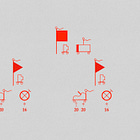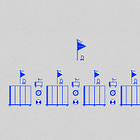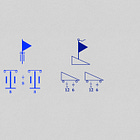Mechanized Cavalry of the Interwar Period
Quick Divisions of the 1930s (Part I)
During the two-decade “intermission” that separated the two world wars of the last century, few denied that troops conveyed by motor vehicles would eventually replace horse cavalry. The fact at the root of this consensus was the steady decline in the number of horses maintained by the civil population. As the armies of all nations depended upon farmers, country gentlemen, and other civilians to breed the steeds that would serve “with the colors,” as well as maintain large numbers of four-legged “reservists,” this reduction in the equine population guaranteed the imminent doom of horse cavalry.
For much of the interwar period, the equine enthusiasts of many armies managed to delay the inevitable retirement of their noble mounts by experimenting with cavalry divisions in which troops carried in various combinations of trucks, tanks, armored cars, and motorcycles co-existed with units of men on horseback. In 1932, for example, the French Army began a program to replace one of the three horse cavalry brigades in each of its cavalry divisions with a motorized brigade.
When tested in maneuvers, these hybrid formations performed poorly. (As might be expected, the horse cavalry brigades found it hard to keep up with their motorized counterparts.) Thus, French soldiers began to explore the possibility of fully motorized cavalry divisions. Three years later, these discussions bore fruit in the form an experimental “light mechanized division” [division légère méchanique].
The champions of this new type of formation imagined it as a means of fulfilling the missions that had been assigned to French cavalry divisions for more than a century. These included the rupture of screens composed of enemy cavalry, the location of enemy armies and army corps, the screening of friendly forces, the exploitation of breakthroughs, the conduct of raids against enemy lines of communication, the guarding of gaps that separated friendly formations from each other, the rapid occupation of important pieces of terrain, and, at the very start of a war, the “covering” [couverture] of mobilization.
The champions of the light mechanized division also imagined that, in addition to carrying out these traditional duties, the light mechanized divisions would be able to act as reconnaissance and security element for army corps (and, conceivably armies) assembled from France’s many fully motorized infantry divisions. Moreover, because the light mechanized division possessed far more firepower than a horse cavalry division, some French soldiers argued that the light mechanized division could serve as a “mobile reserve of firepower.”
The division légère mechanique made a powerful impression on contemporary German horse soldiers, to the point where they decided to form light mechanized divisions of their own. The result was the creation, in 1938 and 1939, of four “light divisions.” Not to be confused with the light infantry (Jäger) divisions that would be raised during the Russian campaign or the light divisions that would be built for service in North Africa, the light divisions of the late 1930s were, like the French light mechanized divisions, fully motorized formations designed to do the sorts of work traditionally preformed by horse cavalry formations.
In 1938, when Austria was grafted onto Germany, the single cavalry formation of the army of the Austrian Republic became the 4th Light Division of the German Army. Like so many of its counterparts in other nations, this “Quick Division” [Schnelle Division] included both motorized and muscle-powered elements. The first step in the conversion process was the transfer of fully horsed units to other duties. The second was the remolding of the remaining elements into the a form that, though inspired by the French model, also contained some characteristically German features.
The division légère mechanique, the Schnelle Division, and the 4th Light Division had much in common. In particular, each contained combat units of the following sorts:
A reconnaissance unit
A tank unit.
A brigade of motorized infantry.
A regiment of artillery.
Subsequent posts in this series will discuss, in some detail, the organization and armament of these types of units, as well as the anti-tank units of those divisions that possessed them.
Note: The version of the division légère mechanique discussed in this series is the one described in the 1936 edition of the official German Notes on French Conduct of Operations and Tactics [Merkblatt über französische Truppenführung und Taktik]. This ideal organization differed somewhat from the actual light mechanized divisions that fought in May and June of 1940.









The decline of the use of horses in agriculture and in transport in the civilian sector dried up the supply of horses which could be used by the military in war time. I suppose I always knew this, but I hadn’t thought of it until you mentioned it here. Even if the armies wanted to maintain large establishments of cavalry in any traditional sense, they were going to find it increasingly difficult to do so, since the underlying economy simply could not generate enough horses for that purpose. It would be interesting to know the cash cost of horses versus motorized vehicles for equivalent functions. I think we have an instinct to think of the horses is cheaper, but that may not be the case, particularly given the infrastructure needed to maintain them.